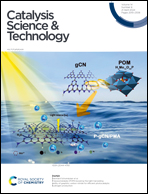Hydrotalcite-based catalysts for 1,4-conjugate addition in organic synthesis
Abstract
Hydrotalcites (HTs) or layered double hydroxide structures are anionic clays with layered structures resembling brucite and interlayer spaces incorporated with various anionic species and water. Hydrotalcites are recognized as highly effective catalysts for a wide range of organic transformations, both in industrial applications and laboratory settings. This is attributed to their possession of Lewis and Brönsted basic properties, coupled with certain acidic sites on the catalyst. On the other hand, conjugate addition is one of the most fundamental and useful methods to construct a new C–C, C–N, C–O or C–S bond at the β-position of the carbon skeleton attached to an electron-withdrawing group. In the last few decades, HTs have emerged as promising heterogeneous catalysts for conjugate addition, offering operational simplicity, compatibility with environmental and economic considerations, easy separation from reaction mixtures, and excellent reusability. This article presents a comprehensive account of the strategies employed for conjugate additions using HTs or their modified forms as catalysts. It offers a detailed overview of the advancements in this field, with a particular emphasis on conducting a comparative analysis of different approaches and methodologies.

- This article is part of the themed collection: Catalysis Science & Technology Recent Review Articles, 2024


 Please wait while we load your content...
Please wait while we load your content...